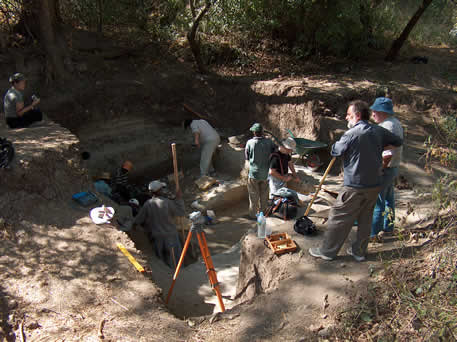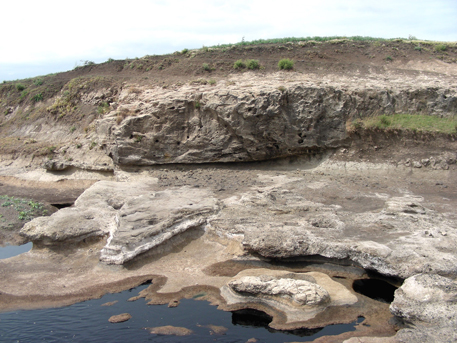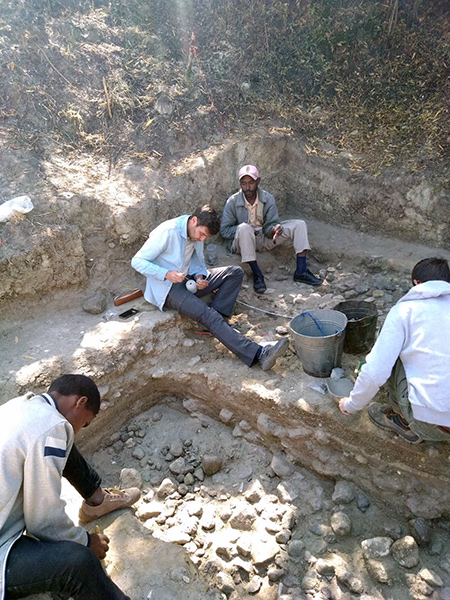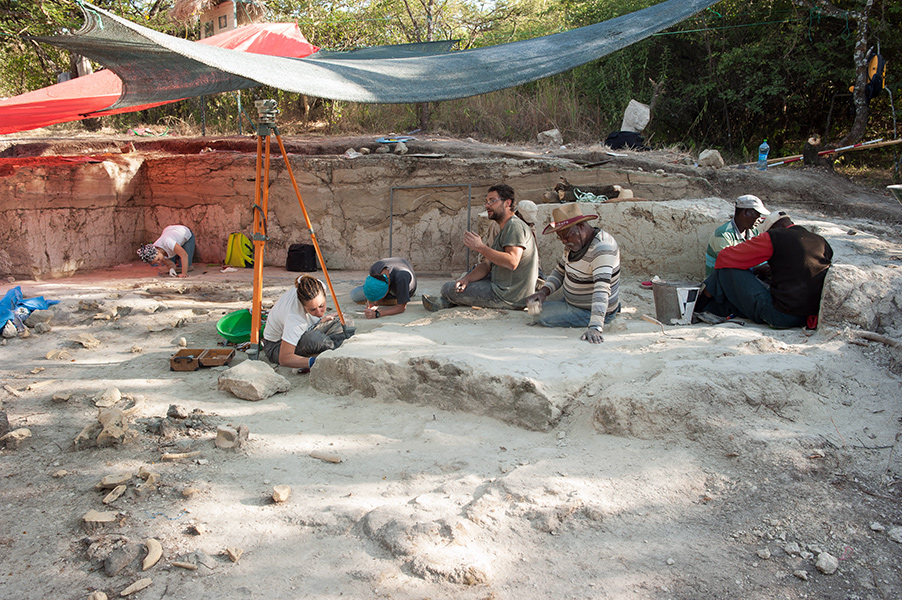The Italian Archaeological Mission
The Italian Archaeological Mission at Melka Kunture started in 1999 under the direction of Marcello Piperno (1999-2010), and is currently under the direction of Margherita Mussi.
A re-analysis of the geomorphological, sedimentological, lithological and volcanological characteristics of parts of the area has been since carried out, together with the study of the mandible of a Homo erectus child discovered in 1982 in Level E of Garba IV; with the archaeozoological study of the materials from Garba IV; with a detailed techno-typological analysis of the collections from the Oldowan sites; and with a thorough revision of the photographic and graphic archives.
In 2004 Chavaillon and Piperno published the first monograph on the Oldowan sites of Melka Kunture “Studies on the Early Paleolithic site of Melka Kunture, Ethiopia”.
Between 2001 and 2004 an Open Air Museum was planned and built at Gombore II, and in 2006 a new museum of Melka Kunture was also organized.
From 2005 to 2009, excavations were carried out at Garba IV (Levels E and F, Oldowan) and at Simbiro III (Acheulean). In 2011 a new research was started along the Atebella, an affluent of the Awash, where many Acheulean layers have been discovered, while Garba III, a Middle Stone Age site excavated in the Seventies of last century, was relocated and reinvestigated.
 Excavation at Garba IVE-2005
Excavation at Garba IVE-2005 Along the Atebella river, an Acheulean layer earlier than 1 million years
Along the Atebella river, an Acheulean layer earlier than 1 million yearshas been exposed by water erosion at the foot of a cliff (picture by M.Mussi)
Since year 2011, the Italian Archaeological Mission conducted fieldwork focusing on Garba and Gombore gullies, while salvage excavations were made at Atebella II. In the Garba gully, test excavations aimed at updating the record of research made in the previous 50 years, notably at Garba I and Garba III.
In the Gombore gully, larger operations were led, from the earliest to the latest, at Gombore Iδ (a newly-discovered site), Gombore II-1, and Gombore II-2. Test excavations were made at Gombore II OAM and Gombore III. The complete archaeological sequence of Gombore gully is now available, with 7 archaeological sites dated between c. 2.000.000 and 750.000 years ago, including levels with hominin footprints.
 Gombore I
Gombore I Gombore II
Gombore II